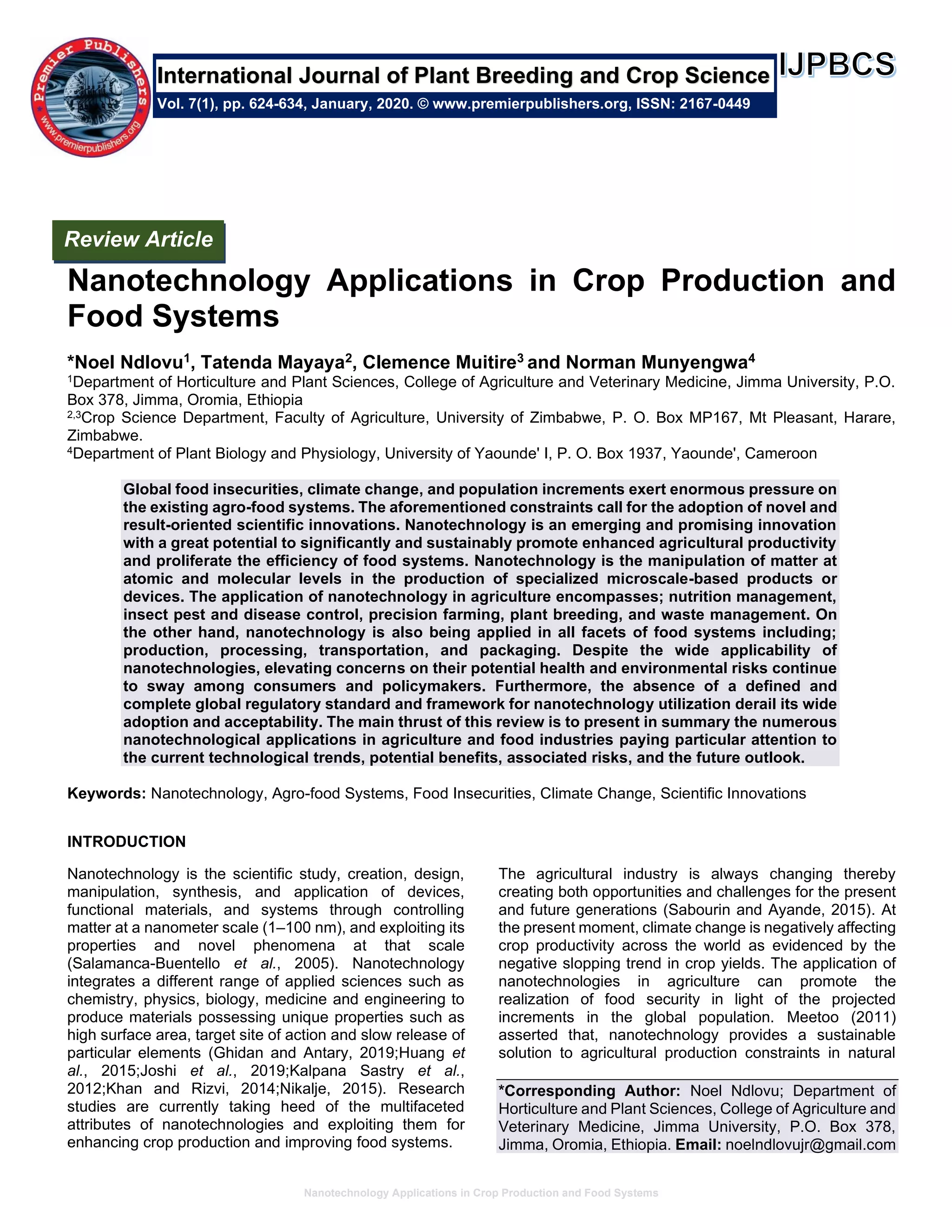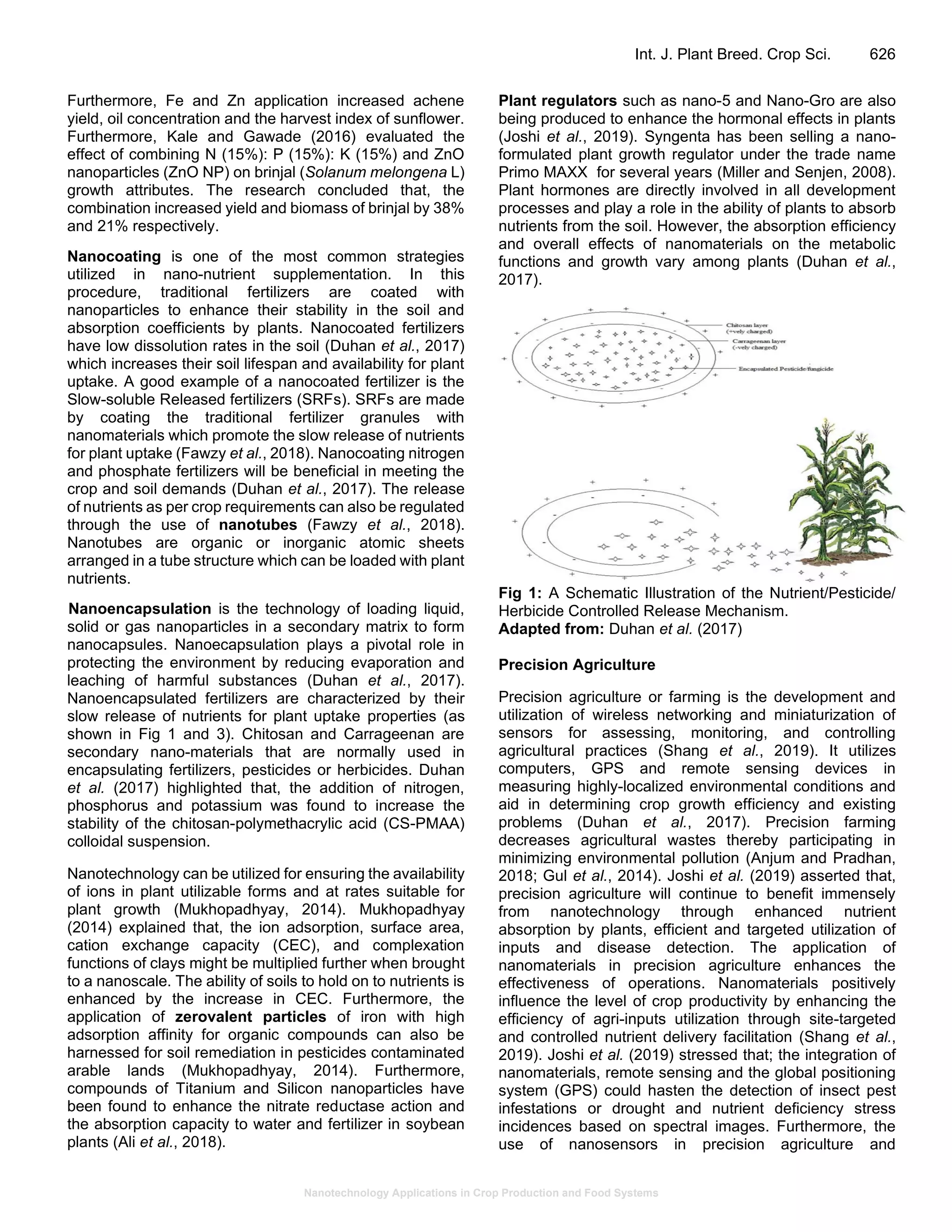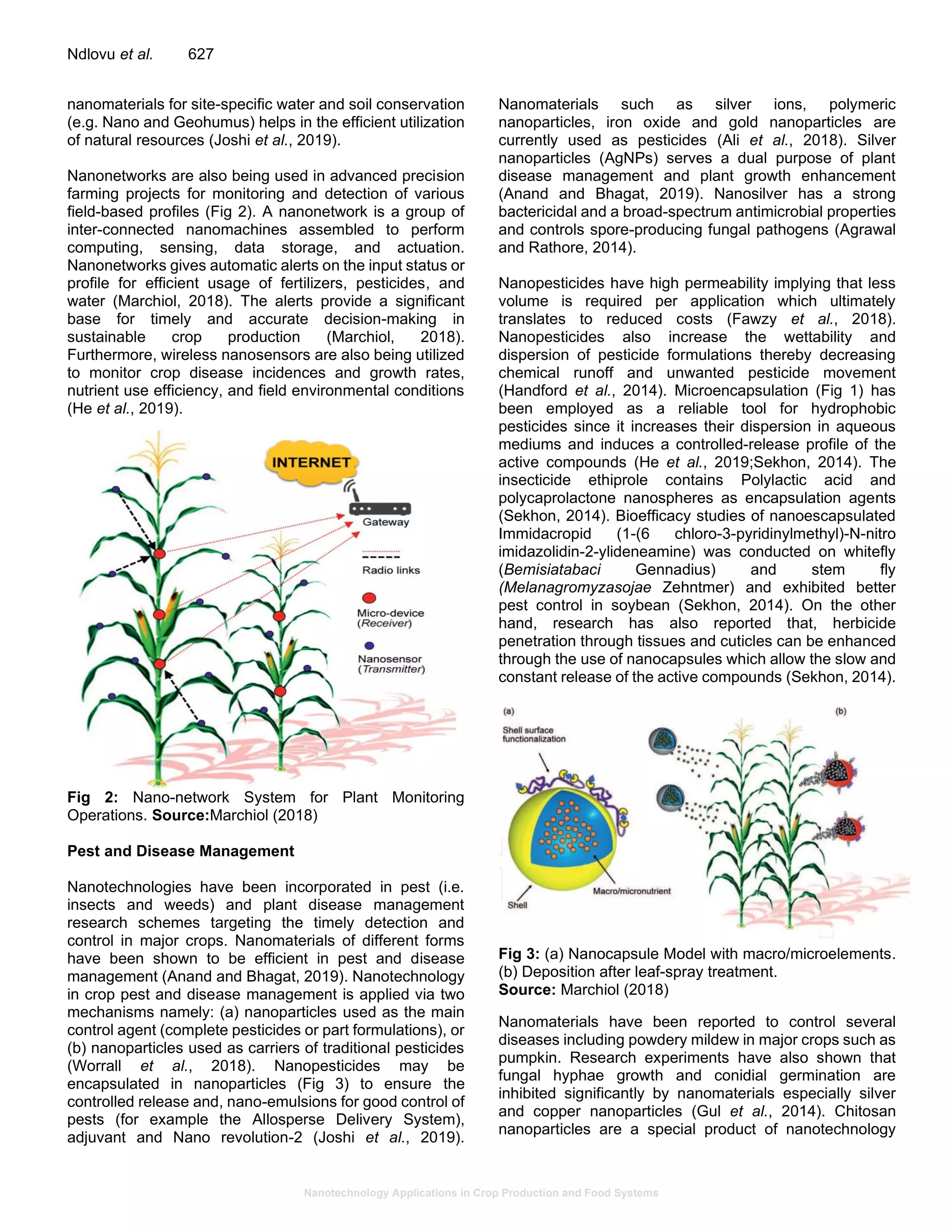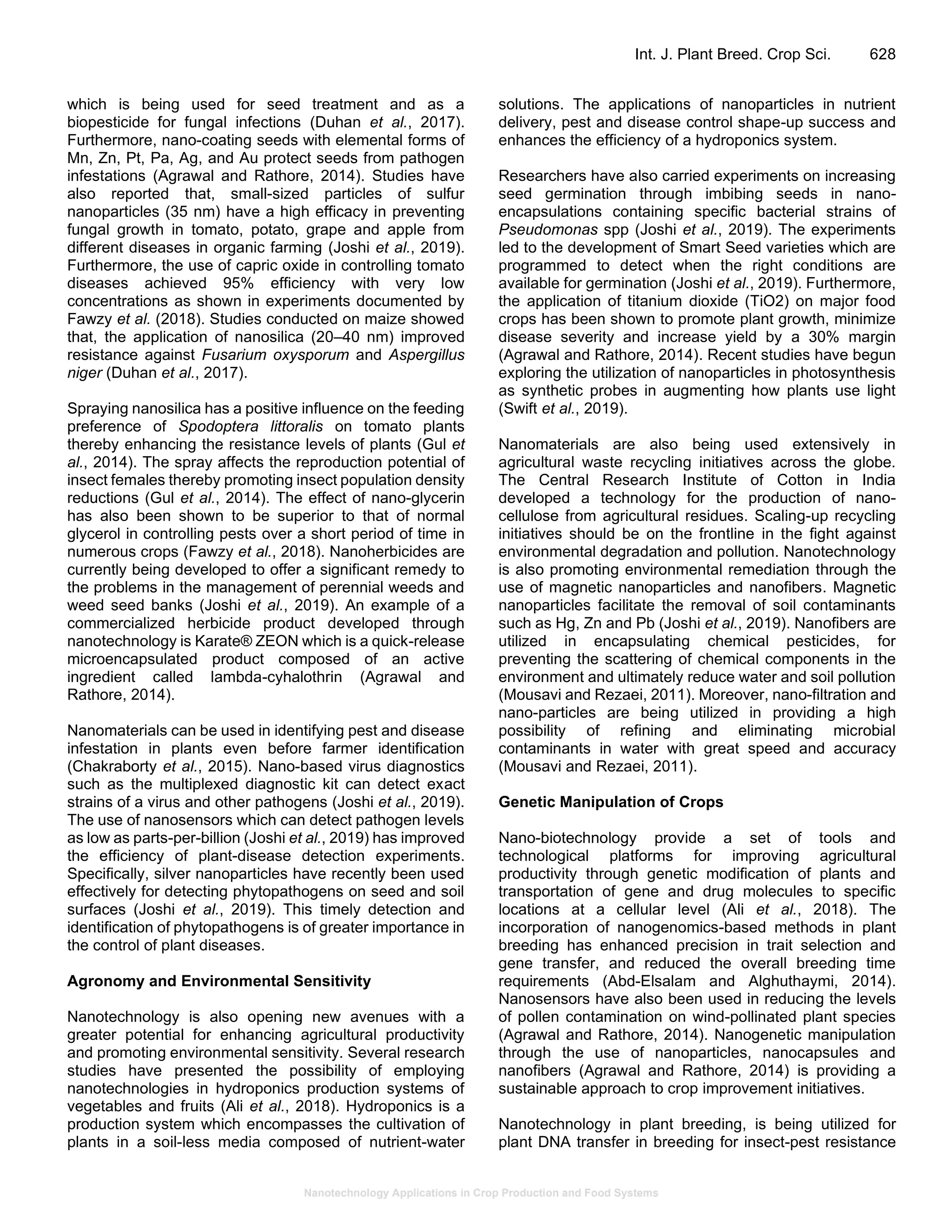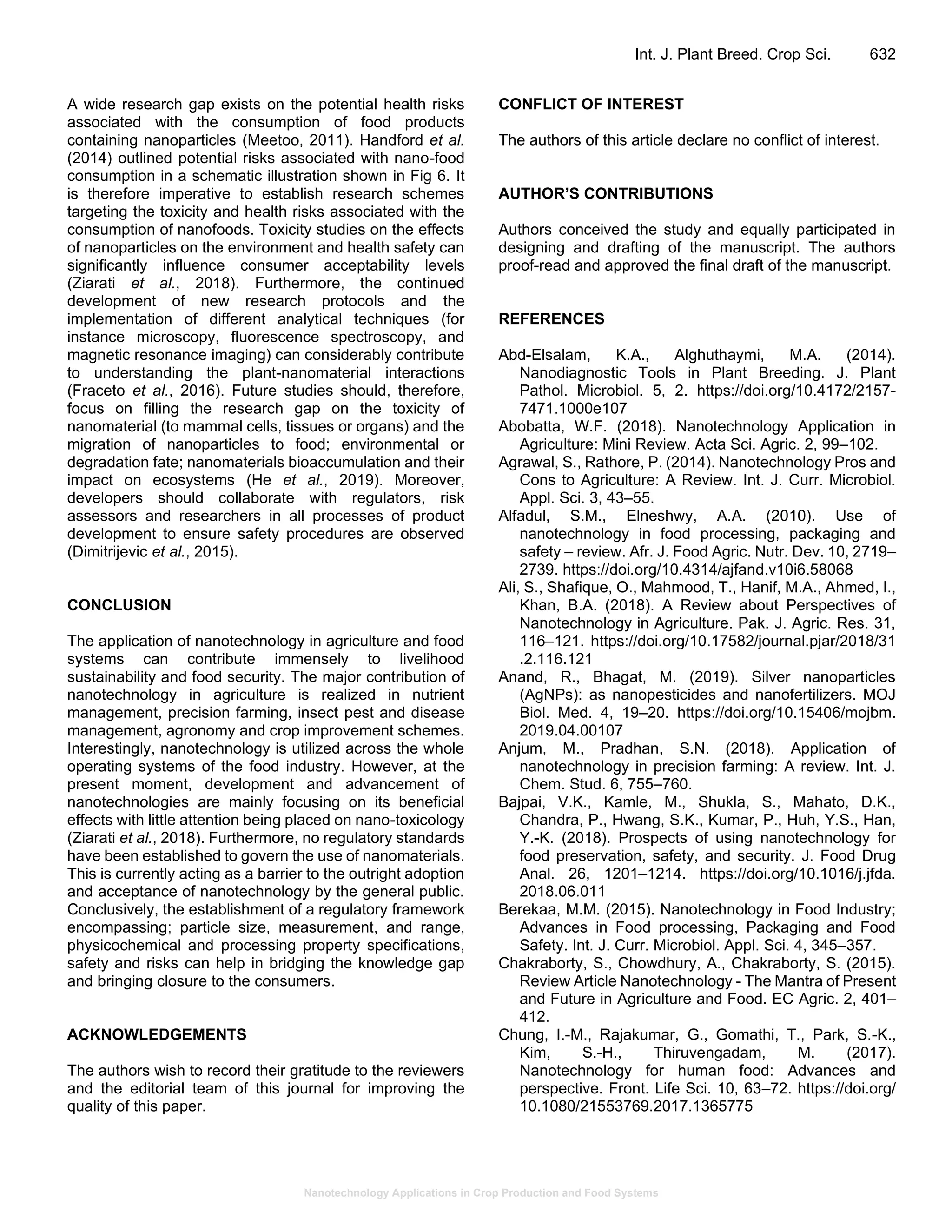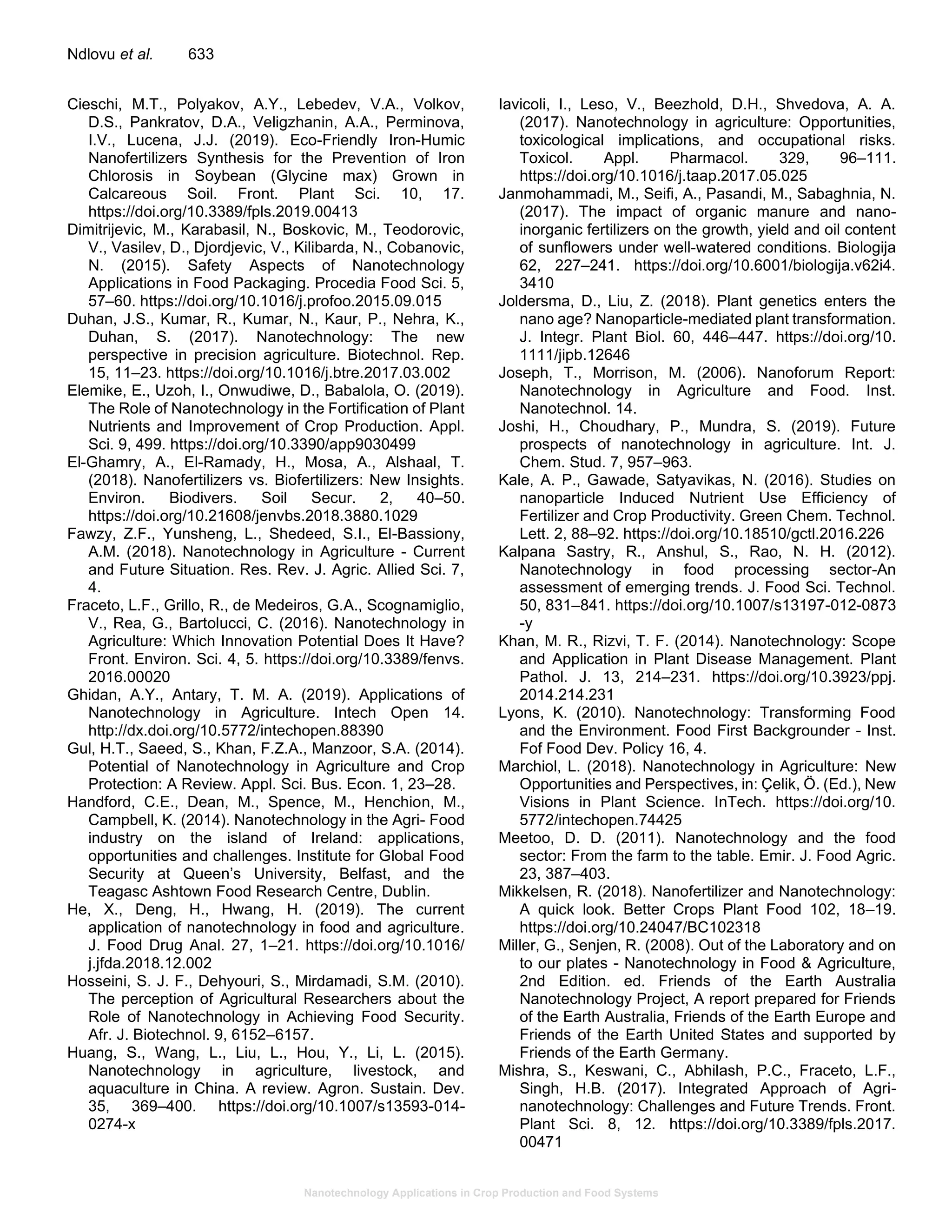The document discusses the applications of nanotechnology in agriculture and food systems, emphasizing its potential to enhance productivity and efficiency amid global challenges like food insecurity and climate change. It outlines various uses including nutrient management, pest and disease control, and precision farming while highlighting concerns regarding health risks and regulatory standards. Despite these risks, nanotechnology is viewed as a sustainable alternative for improving agricultural practices and food system efficiency.
